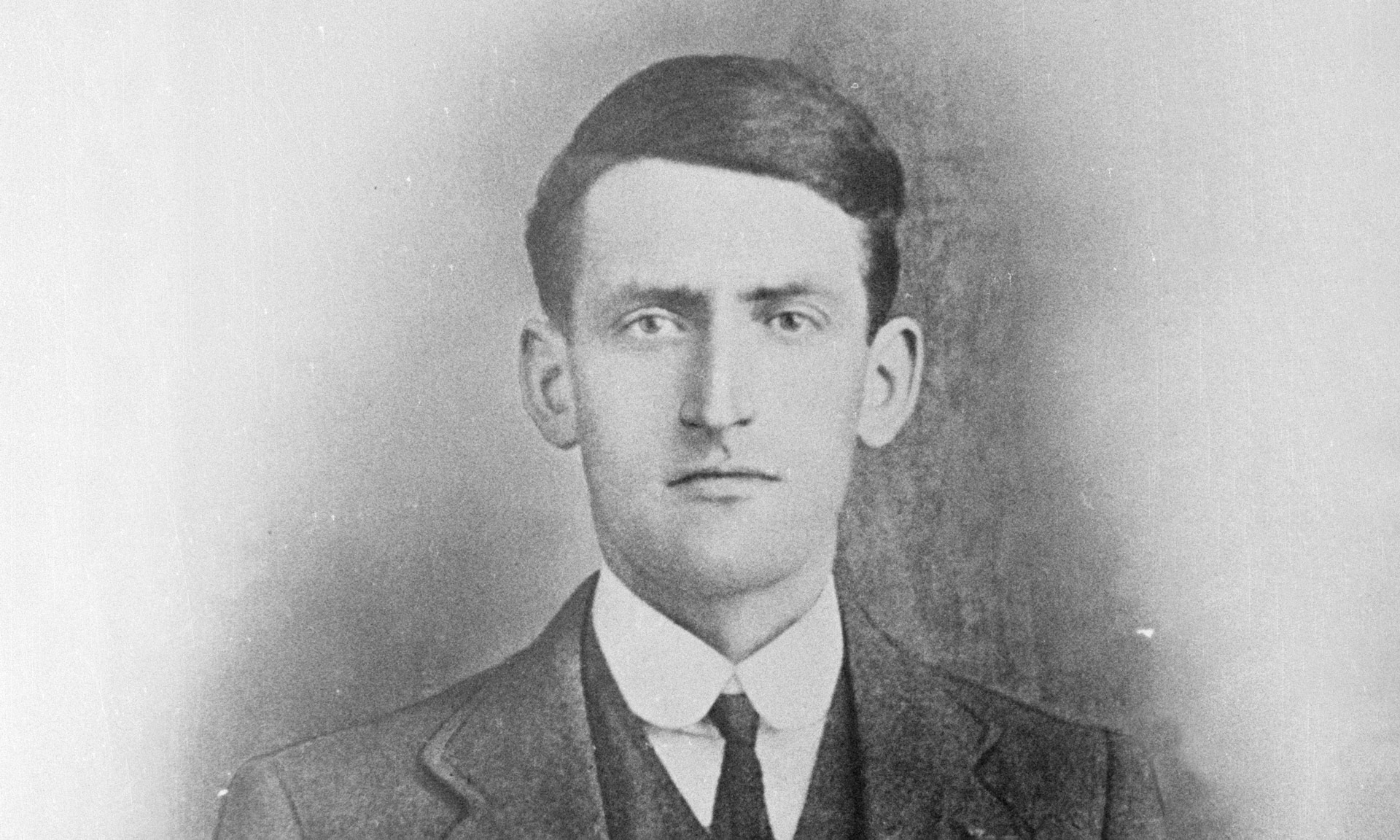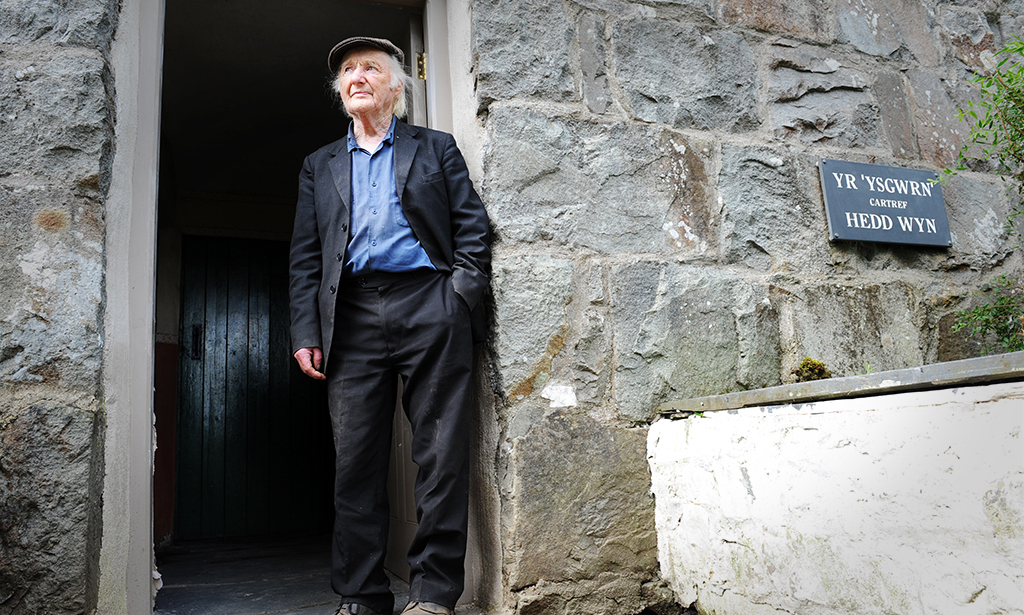Yr Ysgwrn is a traditional Welsh stone farmhouse, set in the hills above Trawsfynydd in Eryri National Park.
It is best-known as the home of Hedd Wyn, or Ellis Humphrey Evans, the famous Welsh-language poet who was tragically killed in the First World War.
History and Symbolism
Yr Ysgwrn was built in 1830 and is an immaculate example of a typical 19th-century farmhouse. The farmhouse’s thick stone walls house living quarters, including a kitchen, parlour, three bedrooms and a buttery, as well as working quarters with a stable, coach house and hay loft.
Hedd Wyn’s family moved to Yr Ysgwrn during the spring of 1887 from the nearby village of Trawsfynydd. He would have been a few months old when the family moved in. At the time, Yr Ysgwrn was a 168-acre hill farm belonging to Hedd Wyn’s father’s family.
In 1917, Yr Ysgwrn became much more than a typical Welsh farmhouse. The tragic story of Hedd Wyn befell the village of Trawsfynydd.
Hedd Wyn was one of the many young men fighting on the frontlines of the First World War. He was also an avid poet, competing in many local and national Eisteddfodau. In July 1917, he submitted a poem to the National Eisteddfod. By the end of that month, he had been fatally wounded during the first day of conflict at the Battle of Passchendaele.
In September 1917, at the chairing of the bard ceremony at Penbedw National Eisteddfod, it was announced that Hedd Wyn was victorious with his entry. It was also announced that he had tragically died in conflict. The chair was draped in black, giving it the name Y Gadair Ddu (The Black Chair).
The chair was later delivered to Yr Ysgwrn, still draped in black, and the farmhouse became forever symbolic of Hedd Wyn’s story and the tragic losses of the First World War.
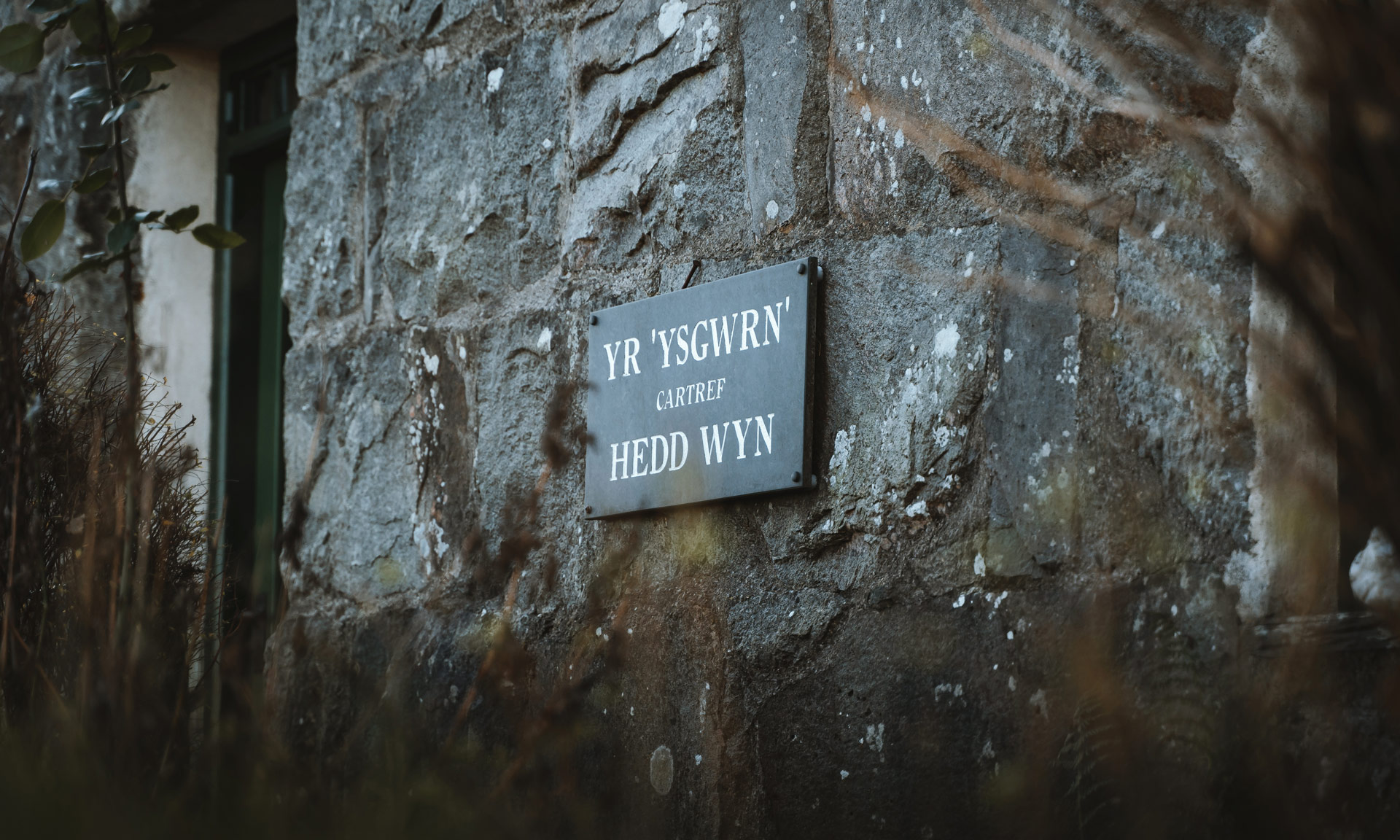
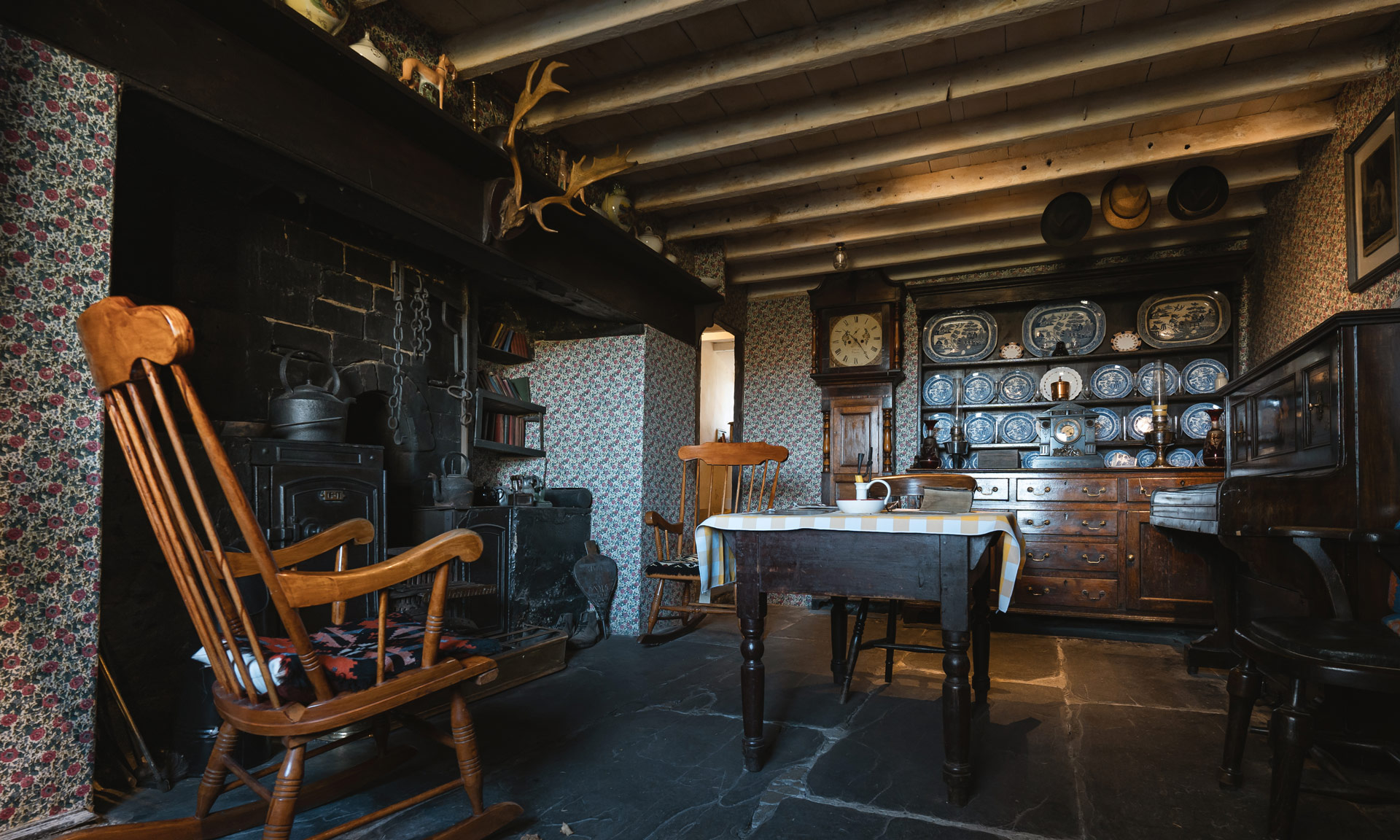
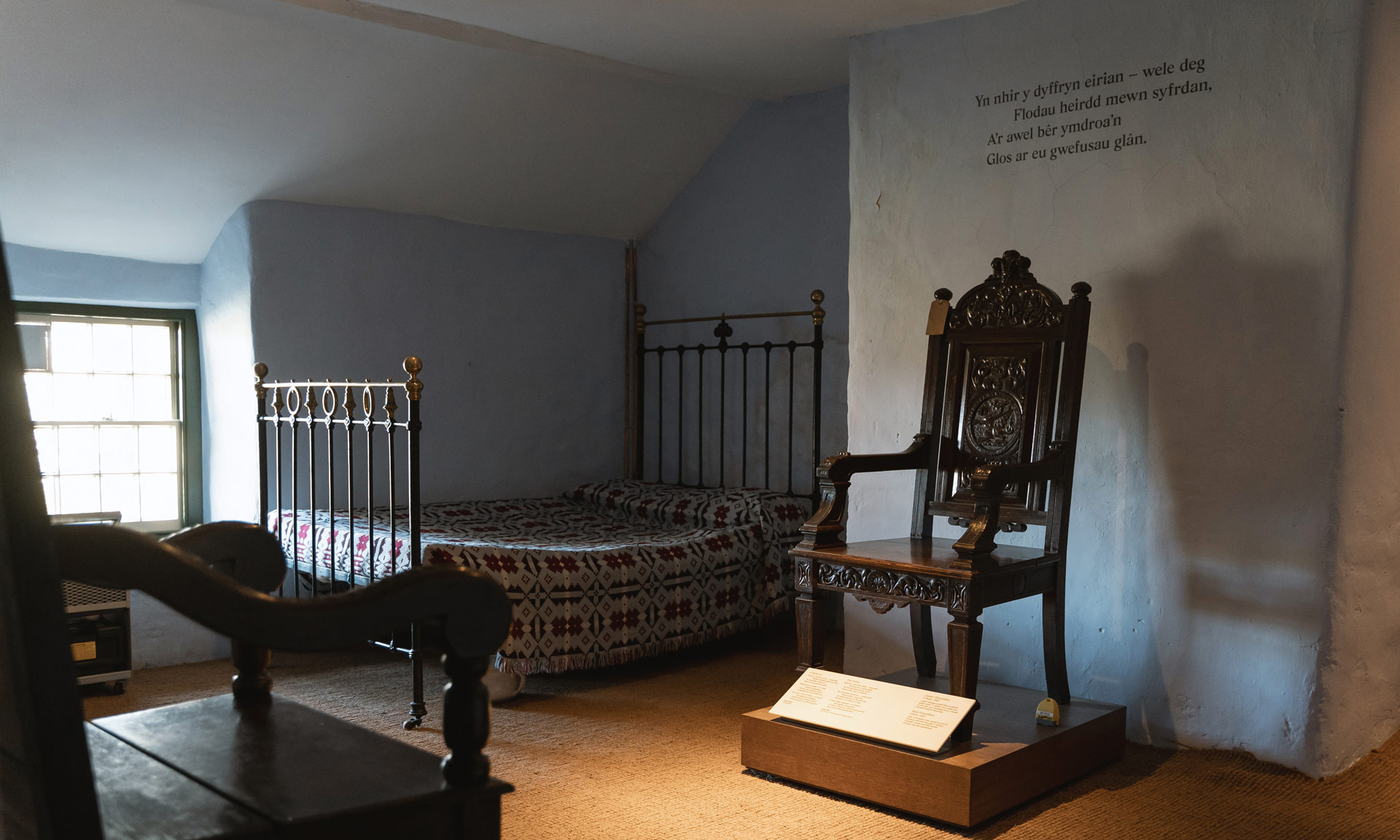
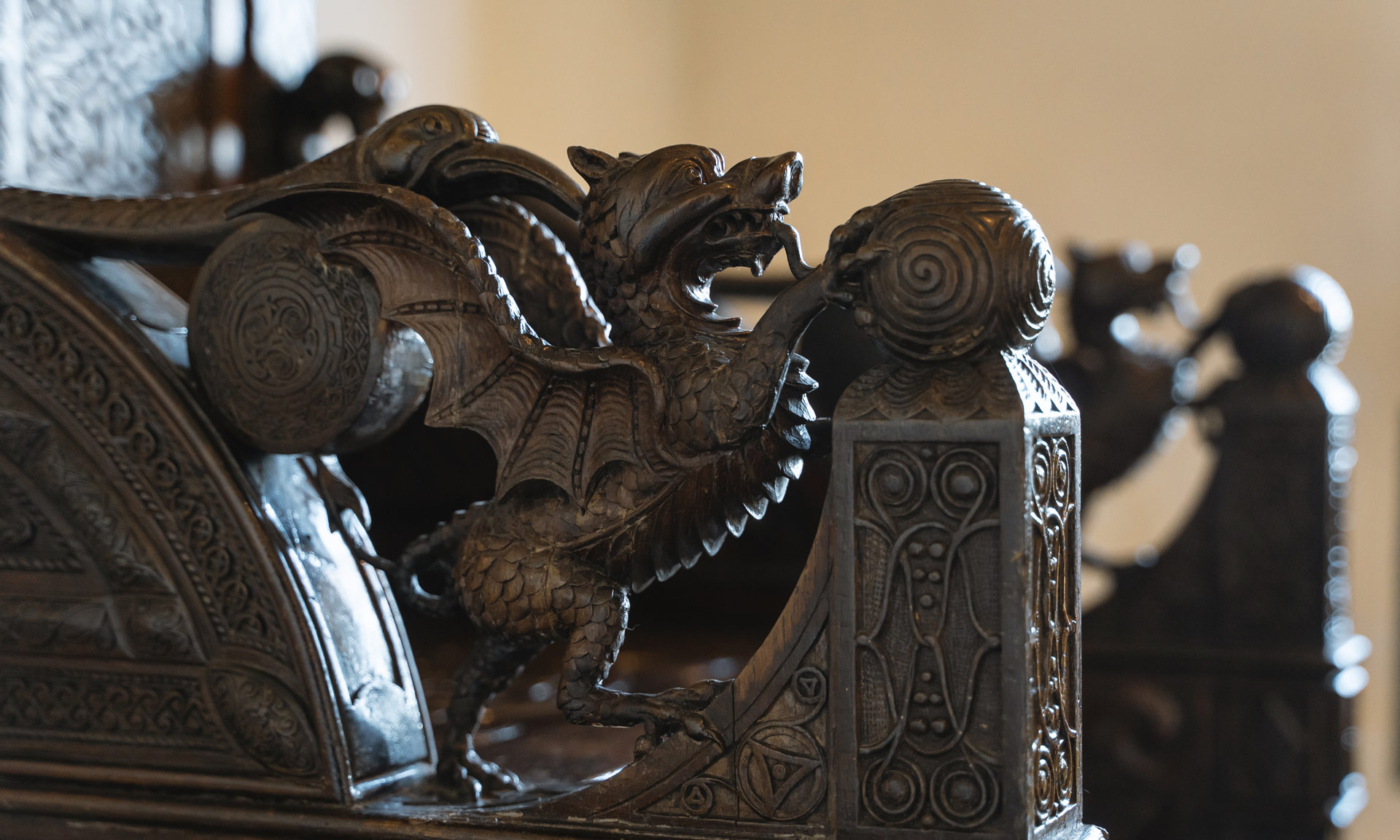
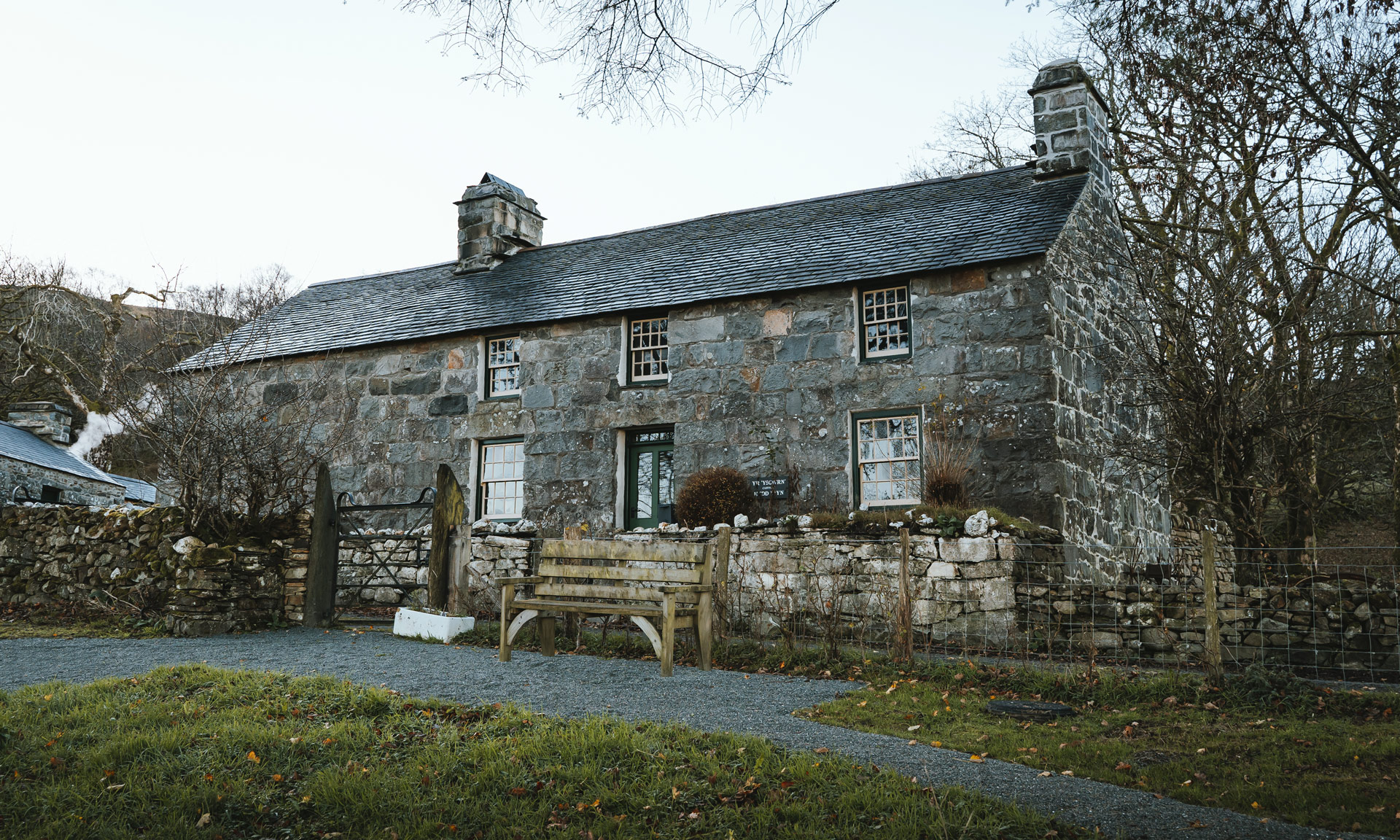










Life at Yr Ysgwrn
Like most rural livelihoods at the turn of the 20th century, life at Yr Ysgwrn was a simple but difficult affair. Tending to the land was the most important part of the day coupled with cooking and cleaning.
Sundays were dedicated to worship. Chapels were both a place of worship and socialising. Poetry was a popular past time and something that would serve as entertainment within the community by competing at local Eisteddfodau and after a hard days work in the fields.
Hedd Wyn was the eldest of eleven children that lived at Yr Ysgwrn. The family shared the three small upstairs bedrooms at the farmhouse.
Acquiring Yr Ysgwrn
Members of Hedd Wyn’s family have lived at Yr Ysgwrn until recent years. Gerald Williams, was born at the farmhouse in 1929. His mother, Ann Williams, was one of Hedd Wyn’s younger siblings. Gerald lived at Yr Ysgwrn until 2012. For years, he farmed the land surrounding the farmhouse and became a custodian of both Yr Ysgwrn and Hedd Wyn’s story. Gerald welcomed visitors to the home for years and worked tirelessly to ensure Hedd Wyn’s story lived on.
However, in 2012, Gerald decided it was time to hand over the custodianship of Yr Ysgwrn to the Eryri National Park Authority.
Under Gerald’s wishes, the Park Authority, with support from the Welsh Government and the National Lottery fund acquired the farmhouse and its surrounding lands securing it for the nation.
The dedicated team at Yr Ysgwrn have been welcoming visitors from across the world since ensuring that Hedd Wyn’s story lives on for generations to come.
Yr Ysgwrn Today
Today, the Grade II* listed farmhouse stands as a defining symbol of social, cultural and agricultural history at the turn of the 20th century, of Welsh-language bardic tradition and culture and, of course, the tragic story of Hedd Wyn.
Yr Ysgwrn has always been a working farm and the surrounding land is still farmed today with sheep and cattle.
The farmhouse is set amongst a peaceful landscape of moving grandeur and beauty. Yr Ysgwrn is a place for tranquillity, peace and reflection.

